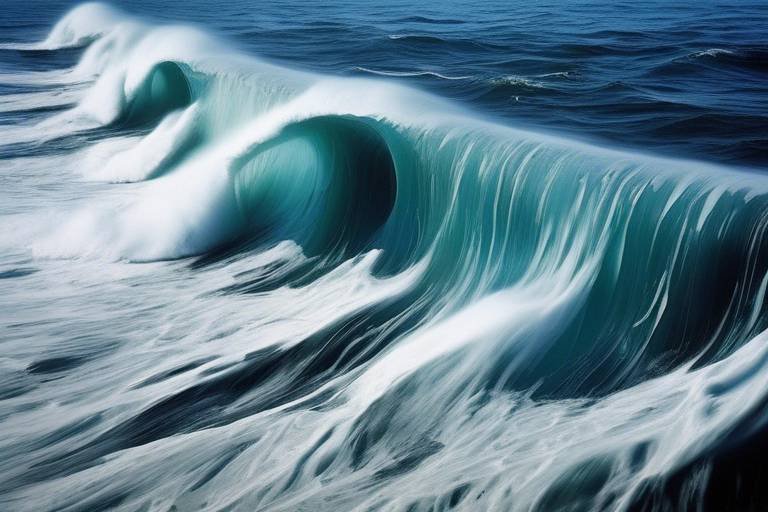The Role of Water in Everyday Life - A Scientific Perspective
Water is often referred to as the elixir of life, and for good reason! It is a fundamental building block of our existence, playing a critical role in our health, agriculture, and the environment. Imagine a world without water: crops wilting under the sun, people suffering from dehydration, and industries grinding to a halt. Water's significance transcends mere survival; it is intricately woven into the fabric of our daily lives, influencing everything from our morning routines to the food we eat and the energy we consume. In this article, we will dive deep into the multifaceted roles of water, examining its impact on human health, agricultural practices, industrial applications, and cultural traditions.
Water is vital for maintaining bodily functions, including digestion, circulation, and temperature regulation. Have you ever noticed how your energy dips when you're dehydrated? That's because water is essential for transporting nutrients and oxygen to your cells, helping to keep your body functioning optimally. Hydration impacts overall health in numerous ways:
- Digestion: Water aids in breaking down food so that your body can absorb nutrients.
- Circulation: Blood is primarily made up of water, which means hydration is crucial for maintaining blood volume and circulation.
- Temperature Regulation: Sweating and respiration are two ways your body cools itself, both of which rely on adequate water levels.
Conversely, the consequences of dehydration can be severe, leading to headaches, fatigue, and even more serious health issues. It’s essential to drink enough water daily to keep your body functioning at its best.
Agriculture relies heavily on water for crop production. Without sufficient water, crops cannot grow, leading to food shortages and economic instability. This section examines various aspects of water use in farming, including irrigation methods, the impact of climate change on water availability, and sustainable practices for efficient water use.
Different irrigation techniques, such as drip and sprinkler systems, play a crucial role in optimizing water usage. Drip irrigation, for instance, delivers water directly to the plant roots, minimizing evaporation and runoff. On the other hand, sprinkler systems can cover larger areas but may lead to water loss through evaporation. Here’s a quick comparison of the two methods:
| Technique | Advantages | Disadvantages |
|---|---|---|
| Drip Irrigation | Efficient water use, reduces weed growth | Higher initial cost, requires maintenance |
| Sprinkler System | Covers large areas, easy to automate | Higher evaporation loss, may lead to uneven distribution |
Comparing traditional irrigation methods with modern technology reveals significant advancements in efficiency and productivity. Traditional methods, like flood irrigation, often waste water and can lead to soil salinization. In contrast, modern techniques utilize sensors and data analytics to optimize water delivery, ensuring that crops receive the precise amount they need.
Climate change poses challenges to water availability for agriculture. Shifting weather patterns can lead to droughts in some regions and floods in others, creating a complex scenario for farmers. Strategies such as rainwater harvesting and the use of drought-resistant crop varieties are becoming increasingly important to mitigate these impacts and ensure food security.
Ensuring water quality is essential for health and agriculture. Contaminated water can lead to serious health issues and can also harm crops. Common contaminants include pesticides, heavy metals, and pathogens. Regular testing and treatment methods are crucial to maintain clean water for both human consumption and crop irrigation.
Industries utilize water for various processes, including manufacturing and energy production. Water is not just a resource; it's a vital component of many industrial applications. As industries grow, the need for sustainable practices becomes increasingly important to preserve this precious resource.
Water is a key component in energy production, especially in hydroelectric power. Here, the energy of flowing water is harnessed to generate electricity, demonstrating a beautiful synergy between natural resources and human innovation. However, the environmental implications of water use in energy production cannot be overlooked, as excessive water withdrawal can disrupt local ecosystems.
Effective water management in industrial settings is crucial for sustainability. Companies are increasingly adopting strategies for reducing water consumption and recycling water within their processes. This not only conserves water but also reduces operational costs, proving that sustainability can be a win-win!
Water plays a significant role in cultural practices and recreational activities. Many cultures incorporate water into rituals and traditions, symbolizing purity, life, and renewal. From religious ceremonies to community festivals, water is often at the heart of cultural identity.
In various societies, water holds symbolic meanings that transcend its physical properties. For instance, in many indigenous cultures, water is viewed as a sacred element that connects people to their ancestors and the earth. Understanding these cultural connections enriches our appreciation of water's role in human life.
From swimming to fishing, water-based activities are popular for recreation and relaxation. Engaging with water not only provides physical benefits but also contributes to mental well-being. Picture yourself lounging by a lake or taking a refreshing dip in the ocean—these experiences can rejuvenate the soul!
Q: How much water should I drink daily?
A: It’s generally recommended to drink at least 8 glasses (2 liters) of water a day, but individual needs may vary based on activity level and climate.
Q: What are the signs of dehydration?
A: Common signs include thirst, dry mouth, fatigue, and dark-colored urine.
Q: How does climate change affect water supply?
A: Climate change can lead to altered precipitation patterns, causing droughts or floods that impact water availability for agriculture and drinking.
Q: What are some sustainable practices for water use in agriculture?
A: Techniques include drip irrigation, rainwater harvesting, and planting drought-resistant crops.
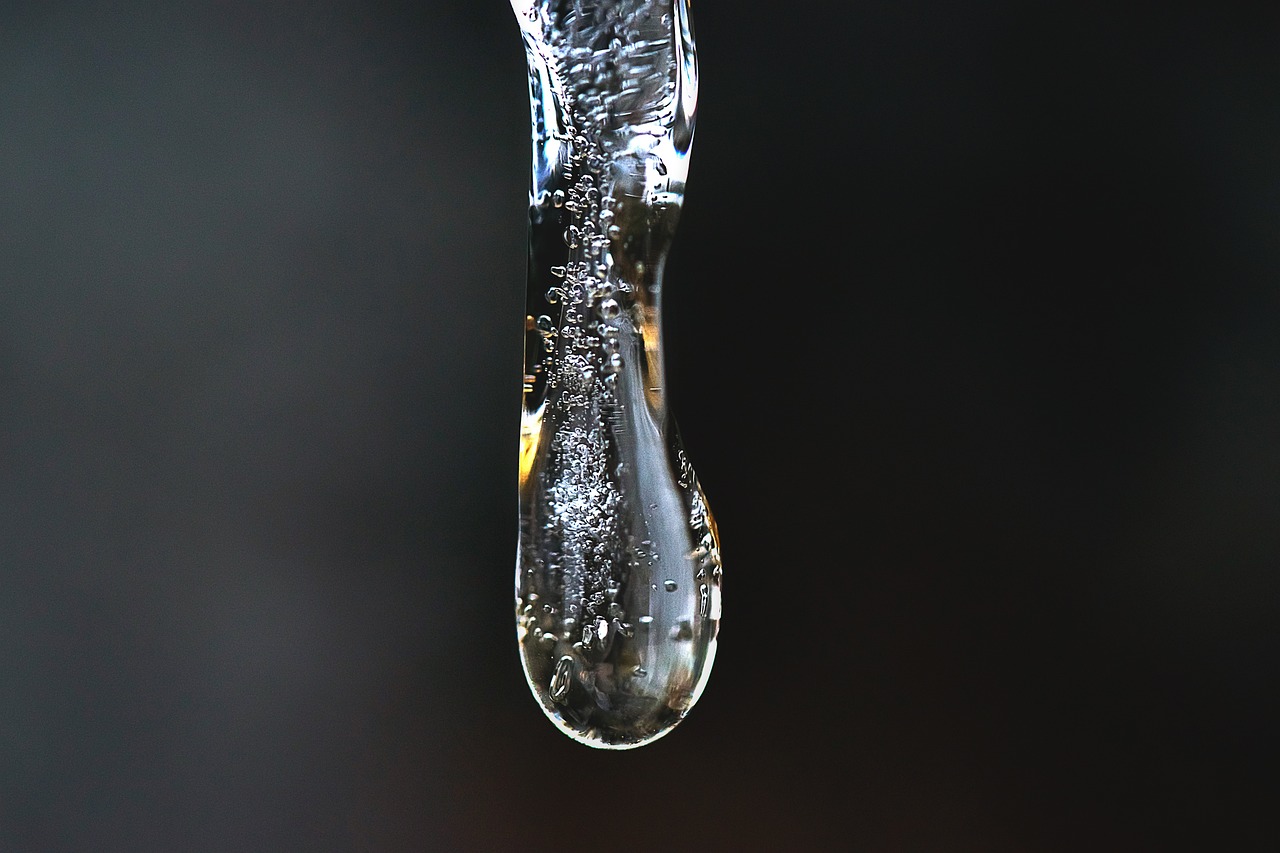
[Importance of Water for Human Health]
Water is often referred to as the essence of life, and for good reason. Our bodies are composed of approximately 60% water, making it an essential component for maintaining various bodily functions. From the moment we wake up to the time we go to bed, water plays a crucial role in our daily activities, influencing everything from digestion to cognitive performance. But what exactly makes water so vital for our health?
First and foremost, hydration is key to optimal bodily function. Water is necessary for the digestion of food and the absorption of nutrients. When we consume food, our bodies rely on water to break it down and transport the nutrients through our bloodstream to where they are needed. Without adequate hydration, this process can become sluggish, leading to issues such as constipation and nutrient deficiencies. Imagine trying to drive a car without oil; it just doesn’t work efficiently!
Moreover, water is essential for regulating body temperature. When we sweat, our bodies cool down, and this process relies heavily on water. In hot weather or during intense physical activity, losing water through sweat can lead to dehydration, which can cause fatigue, dizziness, and even heat-related illnesses. Staying hydrated is like keeping your engine cool; it helps everything run smoothly.
Dehydration can have serious consequences, and it’s not just about feeling thirsty. It can lead to a range of health issues, including:
- Headaches: Even mild dehydration can trigger headaches and migraines.
- Kidney Problems: Chronic dehydration can lead to kidney stones and other kidney-related issues.
- Skin Health: Dehydration can cause your skin to lose its elasticity, leading to dryness and premature aging.
- Joint Health: Water helps lubricate joints, reducing the risk of arthritis and joint pain.
Furthermore, hydration significantly impacts our cognitive functions. Studies have shown that even slight dehydration can impair attention, memory, and overall cognitive performance. Think of your brain as a sponge; without enough water, it can’t absorb information effectively. So, if you find yourself struggling to concentrate, it might just be a sign that you need to drink more water!
To emphasize the importance of water, consider the following table that illustrates the recommended daily water intake based on various factors:
| Age Group | Recommended Daily Intake (liters) |
|---|---|
| Children (4-8 years) | 1.2 |
| Children (9-13 years) | 1.6 |
| Teens (14-18 years) | 2.0 |
| Adults (Men) | 3.7 |
| Adults (Women) | 2.7 |
In conclusion, water is not just a thirst quencher; it is a vital component for maintaining health and wellness. From digestion to cognitive function, the benefits of staying hydrated are profound. So, the next time you reach for a drink, remember that you’re not just satisfying your thirst; you’re fueling your body and mind.
Q: How much water should I drink daily?
A: It varies by individual, but generally, men should aim for about 3.7 liters and women for about 2.7 liters per day, including all beverages and food sources.
Q: Can I drink too much water?
A: Yes, while rare, drinking excessive amounts of water can lead to water intoxication, which dilutes electrolytes in the body and can be dangerous.
Q: What are the signs of dehydration?
A: Common signs include thirst, dry mouth, fatigue, dizziness, and dark-colored urine.
Q: Are there foods that can help with hydration?
A: Yes, fruits and vegetables with high water content, such as cucumbers, watermelon, and oranges, can contribute to your hydration.
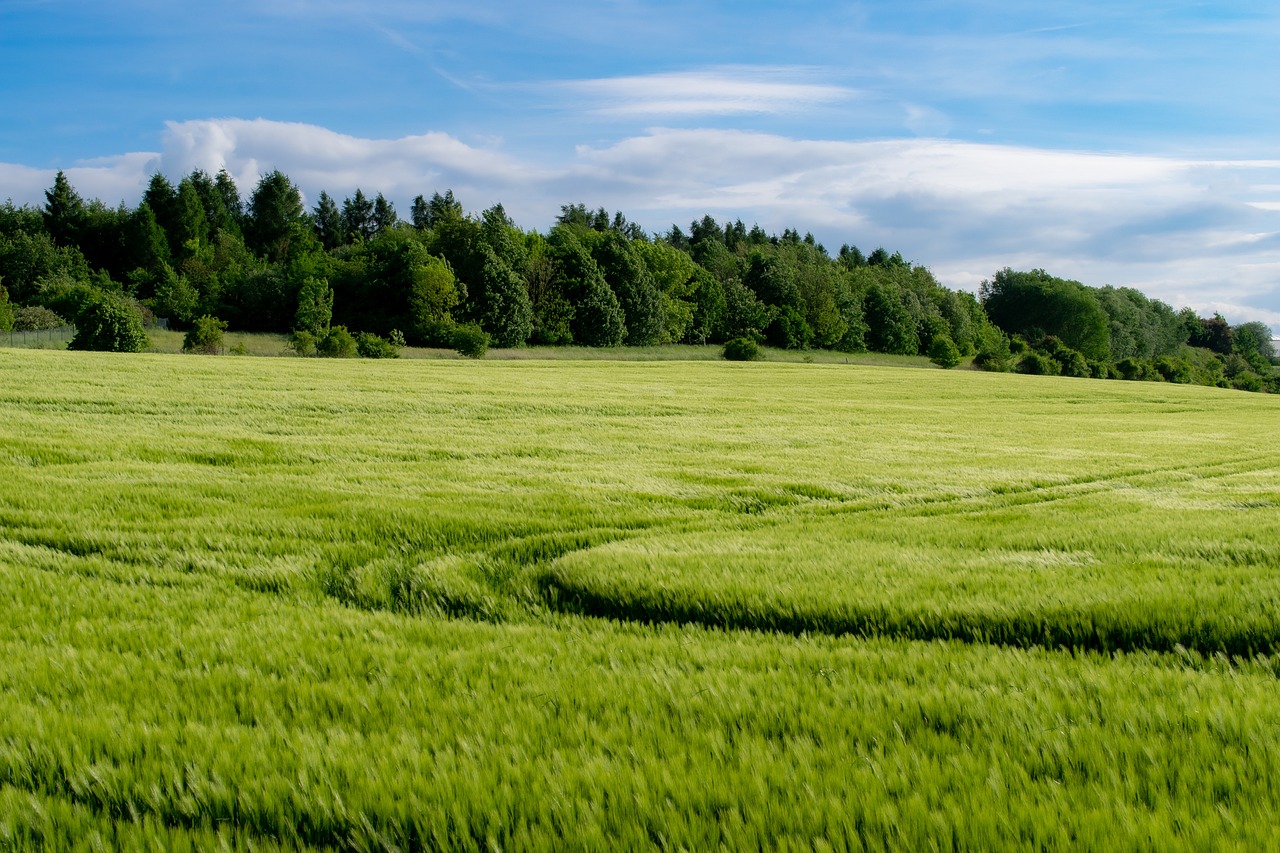
[Water in Agriculture]
Water is often referred to as the lifeblood of agriculture, and for good reason. Without it, crops simply cannot thrive. In fact, approximately 70% of the world's freshwater resources are utilized for agricultural purposes. This staggering statistic underscores the crucial role that water plays in food production. From the moment seeds are sown to the time the harvest is collected, water is a constant necessity. But how does this vital resource affect agricultural practices, and what challenges do farmers face in managing it?
One of the most significant challenges in agriculture is ensuring that crops receive the right amount of water at the right time. This is where irrigation methods come into play. Farmers have developed various techniques to optimize water usage, ranging from traditional flood irrigation to modern drip systems. Each method has its pros and cons. For instance, while flood irrigation can be less expensive to implement, it often leads to water wastage and soil erosion. In contrast, drip irrigation, which delivers water directly to the plant roots, is more efficient and conserves water but requires a higher initial investment. The choice of irrigation technique can significantly impact both crop yield and water conservation efforts.
Understanding the different irrigation techniques is essential for maximizing water efficiency. Here are a few common methods:
- Drip Irrigation: This method involves a network of tubing and emitters that deliver water directly to the plant roots, minimizing evaporation and runoff.
- Sprinkler Systems: These systems spray water over crops in a manner similar to natural rainfall, making them suitable for a variety of crops and terrains.
- Surface Irrigation: Water is applied directly to the soil surface and allowed to flow over the field, which can lead to uneven water distribution.
Each technique has its place in modern farming, and the choice often depends on factors like crop type, soil condition, and available resources.
The comparison between traditional and modern irrigation methods reveals significant advancements in agricultural practices. Traditional methods, such as furrow and basin irrigation, have been used for centuries, but they often lack the efficiency needed to cope with today’s water scarcity. On the other hand, modern methods like precision irrigation use technology to monitor soil moisture and weather conditions, allowing farmers to apply water more judiciously. This not only conserves water but also enhances crop yields, making it a win-win for farmers and the environment alike.
However, the agricultural landscape is not without its challenges. Climate change is altering weather patterns, leading to unpredictable rainfall and prolonged droughts in some regions. Farmers are finding it increasingly difficult to rely solely on natural rainfall, and many are forced to adapt their practices. For instance, sustainable water management practices are becoming essential. Techniques such as rainwater harvesting and the use of drought-resistant crop varieties are gaining traction as farmers seek to mitigate the impacts of climate change.
Moreover, the importance of water quality cannot be overstated. Contaminated water can lead to poor crop yields and health risks for consumers. This is why regular testing and treatment of irrigation water are vital components of modern agriculture. Farmers are increasingly investing in water filtration systems to ensure that their crops are grown under optimal conditions.
In conclusion, water is not just a resource; it is a critical component of agricultural success. As we face challenges related to climate change and population growth, finding innovative ways to manage and conserve this precious resource will be essential for ensuring food security and sustainability in the future.
- Why is water management important in agriculture?
Water management is crucial for maximizing crop yields, conserving resources, and ensuring sustainable farming practices. - What are the most efficient irrigation methods?
Drip irrigation and sprinkler systems are among the most efficient methods, as they minimize water loss and target plant roots directly. - How does climate change affect water availability for agriculture?
Climate change can lead to altered rainfall patterns, increased drought frequency, and higher evaporation rates, all of which can impact water availability for crops.
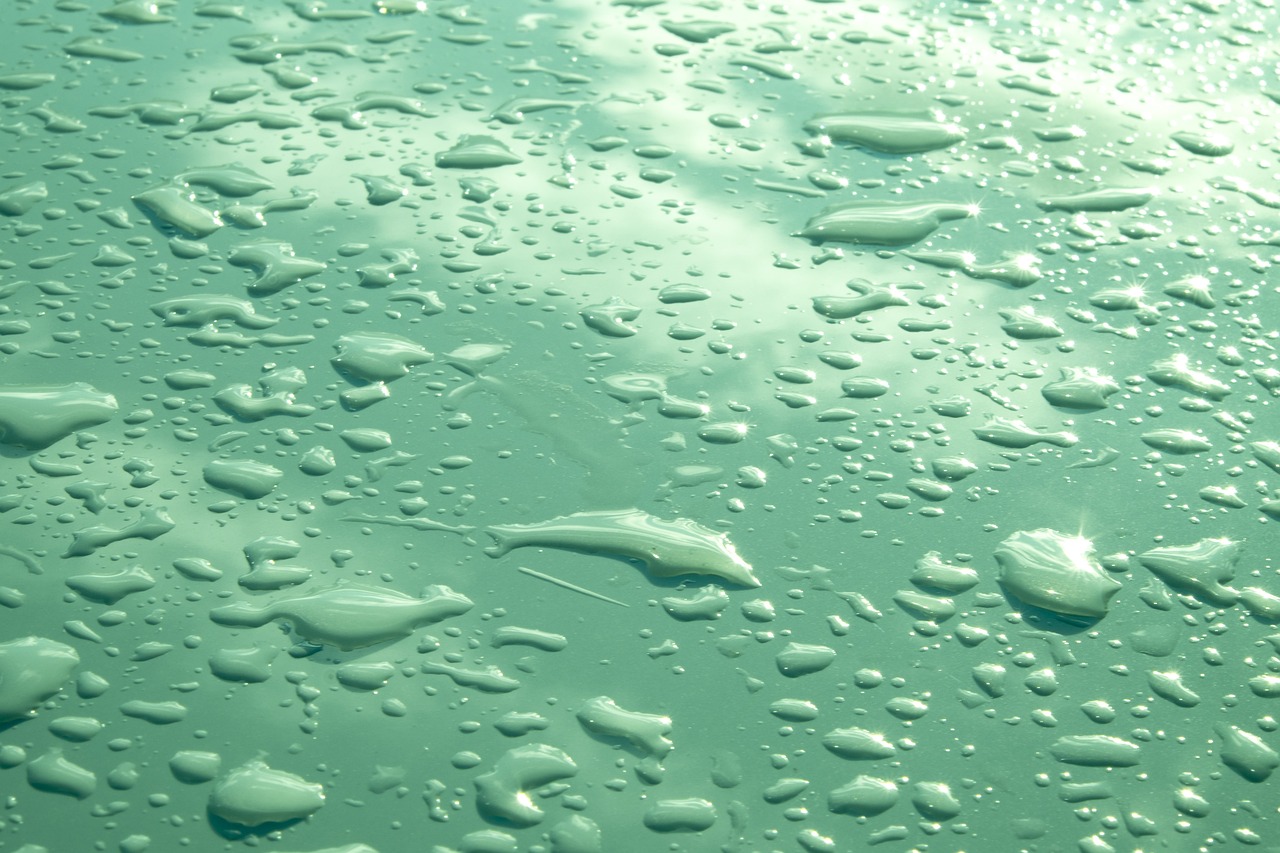
[Irrigation Techniques]
Irrigation is the lifeblood of agriculture, especially in regions where rainfall is inconsistent. As farmers strive to maximize their crop yield and ensure food security, the choice of irrigation technique becomes paramount. There are several methods available, each with its own set of advantages and disadvantages. Understanding these techniques can help farmers make informed decisions that optimize water usage while promoting sustainable practices.
One of the most popular irrigation methods is drip irrigation. This technique involves delivering water directly to the roots of plants through a network of tubing and emitters. The beauty of drip irrigation lies in its precision; it minimizes water wastage and reduces evaporation losses. Imagine watering a garden with a gentle, steady stream that nourishes the plants without drowning them. This method is particularly effective for high-value crops and in arid regions where every drop counts. However, the initial setup costs can be higher than traditional methods, and the system requires regular maintenance to prevent clogging.
In contrast, sprinkler irrigation mimics natural rainfall, distributing water through a system of pipes and rotating sprinklers. This method is versatile and can be used for various crops and terrains. It’s like having a mini rainstorm in your backyard! However, while it covers a larger area, sprinkler systems can lead to higher evaporation losses, especially in hot, dry climates. Additionally, if not properly managed, they can contribute to water runoff and erosion.
When we look at the traditional methods, such as surface irrigation, we find a more rudimentary approach. This technique involves flooding fields with water, allowing it to flow over the crops. While it may seem simple and cost-effective, it can lead to uneven water distribution and significant water loss through evaporation and runoff. Traditional methods often depend on local topography and can be less efficient compared to modern techniques.
On the other hand, advancements in technology have led to the emergence of modern irrigation technologies, such as precision irrigation systems. These systems utilize sensors and data analytics to determine the exact water requirements of crops, allowing for targeted irrigation. It’s akin to having a personal assistant for your plants, ensuring they receive just the right amount of water at the right time. This not only conserves water but also enhances crop productivity.
To summarize, the choice of irrigation technique can significantly impact water conservation and agricultural productivity. Here’s a quick comparison of the most common techniques:
| Irrigation Technique | Advantages | Disadvantages |
|---|---|---|
| Drip Irrigation | Water-efficient, reduces evaporation, targets roots | Higher initial costs, requires maintenance |
| Sprinkler Irrigation | Covers large areas, mimics rainfall | Higher evaporation losses, potential runoff issues |
| Surface Irrigation | Simple and cost-effective | Uneven distribution, significant water loss |
| Precision Irrigation | Targeted watering, enhances productivity | Requires technology and data management |
In conclusion, the choice of irrigation technique is not just a matter of preference but one of necessity in our changing climate. As water becomes an increasingly precious resource, adopting more efficient irrigation practices will be crucial for sustainable agriculture. Farmers must weigh the pros and cons of each method to find the best fit for their specific needs, ensuring that they can grow food while conserving water for future generations.
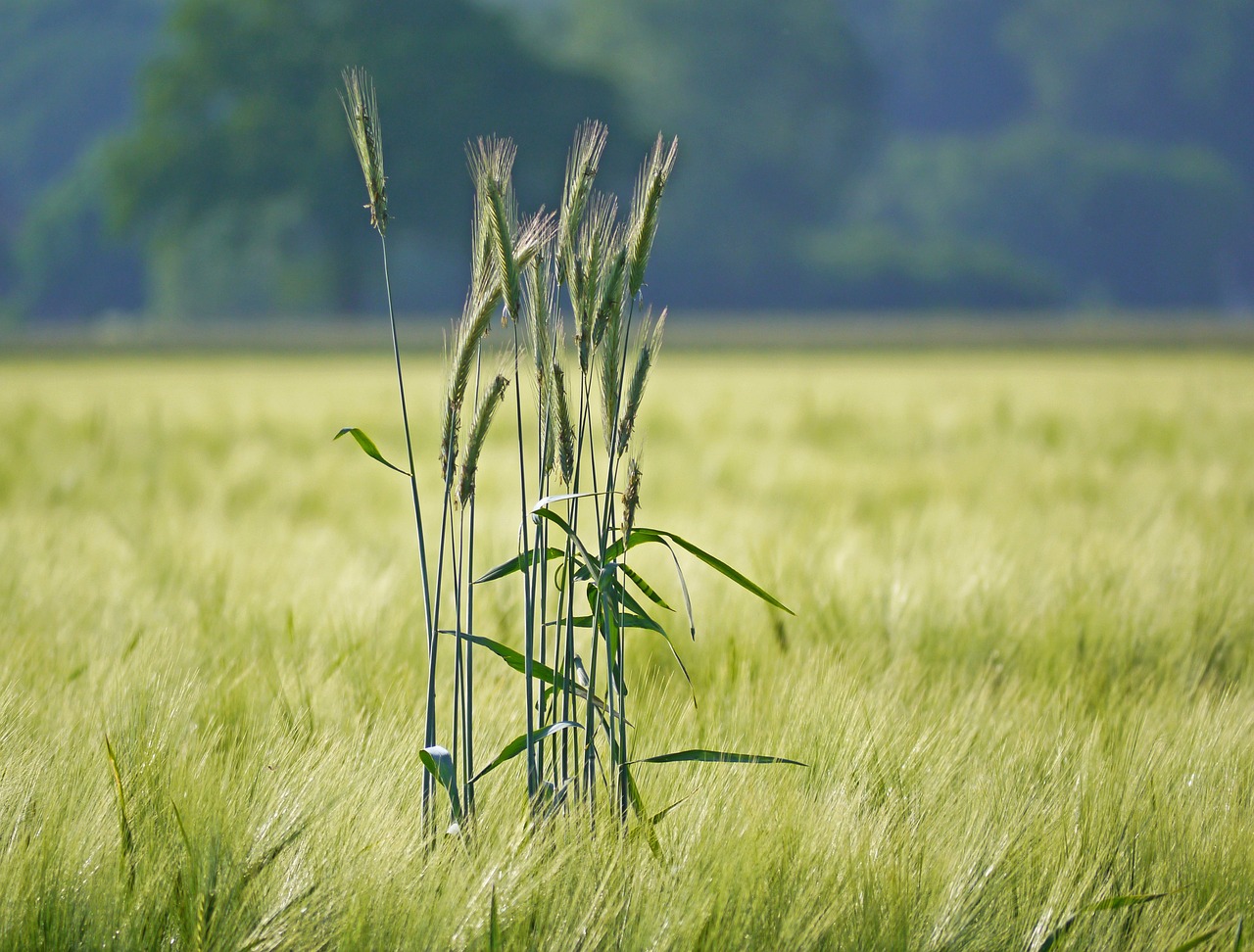
[Traditional vs. Modern Methods]
When we think about irrigation, our minds often wander to the dusty fields of yesteryear, where farmers relied on the whims of nature to water their crops. Traditional methods of irrigation, such as flood irrigation and surface irrigation, have been the backbone of agriculture for centuries. These techniques, while effective in their time, often lead to significant water wastage and can result in soil erosion. For instance, flood irrigation involves inundating the fields with water, which can saturate the soil but also encourages evaporation and runoff, making it less efficient in water use.
On the flip side, the advent of modern irrigation technologies has revolutionized the way we think about water management in agriculture. Techniques like drip irrigation and sprinkler systems have emerged as champions of efficiency, allowing farmers to deliver water directly to the plant roots, minimizing waste and maximizing absorption. For example, drip irrigation can reduce water usage by up to 70% compared to traditional methods, making it a game-changer in water-scarce regions.
To illustrate the differences, let’s take a closer look at the advantages and disadvantages of both approaches:
| Method | Advantages | Disadvantages |
|---|---|---|
| Traditional Irrigation |
|
|
| Modern Irrigation |
|
|
As we compare these two methods, it becomes clear that while traditional techniques have their place, the future of agriculture lies in modern innovations. Farmers are increasingly adopting these advanced systems, not just for the sake of efficiency, but also to adapt to the changing climate and water scarcity challenges. With the right balance of technology and sustainable practices, we can ensure that our agricultural systems are resilient and productive for generations to come.
In conclusion, the shift from traditional to modern irrigation methods is not just a trend; it's a necessity in the face of global challenges. By embracing these advancements, we are not only optimizing our water use but also safeguarding our food security and environmental health.

[Impact of Climate Change]
The effects of climate change on water availability are profound and far-reaching, impacting not just agriculture but also the very fabric of our ecosystems and communities. As temperatures rise and weather patterns shift, the traditional sources of water that farmers have relied on for generations are becoming increasingly unpredictable. This unpredictability can lead to droughts in some regions while causing flooding in others, creating a cycle of extremes that challenges our ability to manage water resources effectively.
One of the most pressing issues is the reduction of freshwater resources. Studies show that many regions are experiencing a decline in snowpack, which serves as a natural reservoir for water. When winter precipitation falls as rain instead of snow, it leads to immediate runoff rather than a gradual release of water during warmer months. This shift can result in water scarcity during critical growing seasons, adversely affecting crop yields and food security.
Moreover, the increasing frequency of extreme weather events, such as hurricanes and heavy rainfall, can lead to soil erosion and contamination of water supplies. Flooding can wash away topsoil, which is essential for healthy crop growth, while also introducing pollutants into water bodies. This contamination not only affects agricultural practices but also poses risks to human health, as clean drinking water becomes scarcer.
To adapt to these challenges, farmers and agricultural experts are exploring various strategies, including:
- Improved irrigation techniques: Utilizing advanced technologies like drip irrigation can significantly reduce water waste.
- Crop diversification: Planting a variety of crops can help mitigate risks associated with climate variability.
- Soil conservation practices: Techniques such as cover cropping and reduced tillage can enhance soil health and water retention.
In essence, the impact of climate change on water resources is a complex issue that requires a multifaceted approach. By understanding these dynamics and implementing sustainable practices, we can better prepare for a future where water scarcity becomes increasingly common. The need for innovation in water management has never been more urgent, as we strive to ensure that both our agricultural systems and communities can thrive in the face of changing climatic conditions.
Q1: How does climate change specifically affect water availability?
A1: Climate change affects water availability through altered precipitation patterns, increased evaporation rates, and changes in snowmelt timing, leading to both droughts and floods.
Q2: What are some sustainable practices to mitigate the effects of climate change on water resources?
A2: Sustainable practices include improving irrigation efficiency, diversifying crops, implementing soil conservation techniques, and utilizing rainwater harvesting systems.
Q3: Why is clean water essential for agriculture?
A3: Clean water is crucial for agriculture as it directly impacts crop health, yield, and food safety. Contaminated water can lead to poor crop quality and health risks for consumers.
Q4: Can climate change affect water quality?
A4: Yes, climate change can lead to increased water pollution from runoff during heavy rainfall, affecting the quality of water available for both drinking and irrigation.

[Water Quality and Safety]
Ensuring water quality is not just a matter of convenience; it’s a fundamental aspect of both human health and agricultural productivity. Clean water is essential for drinking, cooking, and sanitation, while in agriculture, it directly affects crop yields and food safety. Contaminated water can lead to a host of health problems, from gastrointestinal diseases to more severe conditions caused by harmful pathogens and chemicals. Did you know that according to the World Health Organization, around 2 billion people globally use a drinking water source contaminated with feces? This alarming statistic highlights the critical need for water safety measures.
Common contaminants in water include bacteria, viruses, heavy metals, and pesticides. The presence of these pollutants can severely compromise water quality. For instance, lead, often leached from old pipes, can cause developmental issues in children, while nitrates from agricultural runoff can lead to serious health risks. Therefore, regular water testing is vital to ensure safety. Testing can be conducted through various methods, including:
- Home testing kits for basic contaminants
- Laboratory testing for comprehensive analysis
- Regular municipal water quality reports
Furthermore, the importance of clean water extends beyond personal health; it also plays a crucial role in agriculture. Farmers depend on high-quality water for irrigation to produce safe, nutritious food. Contaminated irrigation water can introduce pathogens into crops, posing a risk to consumers. Thus, agricultural practices must incorporate rigorous water quality assessments to avoid such hazards.
To illustrate the significance of water quality, consider the following table that summarizes common water contaminants and their potential sources:
| Contaminant | Source | Health Effects |
|---|---|---|
| Bacteria (e.g., E. coli) | Sewage, animal waste | Gastrointestinal illness |
| Lead | Old plumbing, industrial discharge | Neurological damage |
| Nitrates | Fertilizer runoff | Methemoglobinemia (blue baby syndrome) |
| Pesticides | Agricultural runoff | Various health issues, including cancer |
In conclusion, maintaining water quality is a shared responsibility among individuals, communities, and governments. Public awareness, regular testing, and sustainable practices are key to ensuring that our water remains safe and clean for all uses. As we navigate through the complexities of water safety, let’s remember that every drop counts!
Q1: How often should I test my water?
A1: It is recommended to test your water at least once a year, or more frequently if you notice any changes in taste, color, or odor.
Q2: What should I do if my water is contaminated?
A2: If contamination is detected, avoid using the water for drinking or cooking. Contact your local health department for guidance on treatment options.
Q3: How can I improve my home’s water quality?
A3: Installing a water filtration system can help remove contaminants. Additionally, regularly checking and maintaining your plumbing can prevent issues.
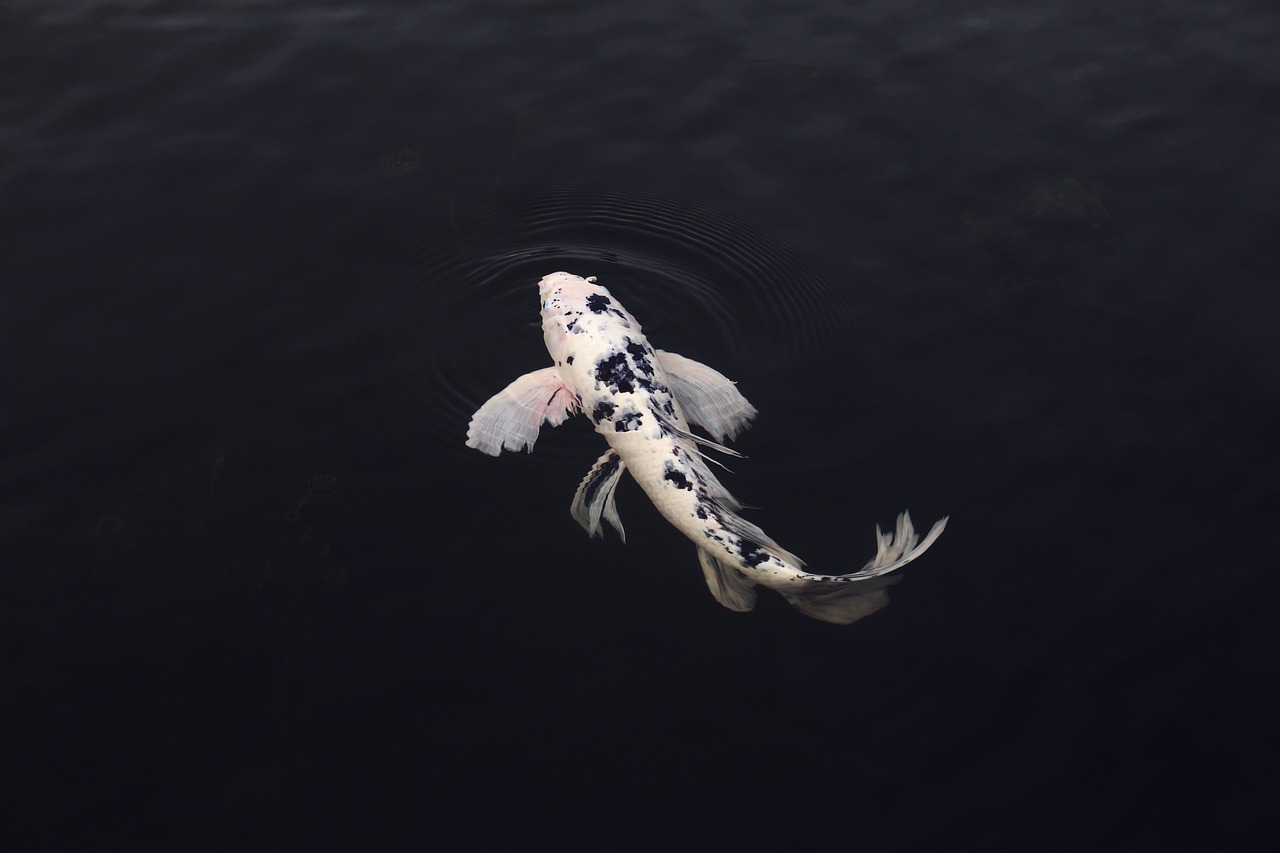
[Water's Role in Industry]
Water is more than just a basic necessity; it is the lifeblood of various industries, playing a crucial role in processes that range from manufacturing to energy production. Without water, many industrial operations would come to a screeching halt. Think of water as the oil that keeps the machinery of industry running smoothly. From cooling systems in power plants to the mixing of chemicals in manufacturing, water is integral to the efficiency and effectiveness of industrial activities.
In manufacturing, water is used in multiple ways, including as a solvent, coolant, and even as a raw material. For instance, in the food and beverage sector, water is essential not only for cleaning and processing but also as a key ingredient in many products. The textile industry relies heavily on water for dyeing and finishing processes, while the chemical industry uses it for reactions and formulations. The sheer volume of water required for these processes can be staggering, making effective water management a priority for industries across the board.
Moreover, the energy production sector showcases water's vital role, particularly in hydroelectric power generation. Hydroelectric plants harness the kinetic energy of flowing water to generate electricity, demonstrating a beautiful synergy between natural resources and technological advancement. However, this relationship comes with its own set of challenges, particularly concerning environmental sustainability. As industries grow, so does the demand for water, leading to increased pressure on local water sources and ecosystems.
To mitigate these challenges, many industries are adopting sustainable practices aimed at reducing water consumption and enhancing efficiency. For example, companies are increasingly investing in water recycling technologies that allow them to treat and reuse water within their processes. This not only conserves water but also reduces the amount of wastewater generated, contributing to a healthier environment. Additionally, industries are exploring innovative cooling systems that require less water, thereby minimizing their ecological footprint.
| Industry | Water Usage (liters per unit) | Sustainable Practices |
|---|---|---|
| Food & Beverage | 500-1000 | Water recycling, efficient cleaning systems |
| Textiles | 2000-5000 | Closed-loop dyeing processes |
| Chemicals | 1000-3000 | Process optimization, water reuse |
| Energy Production | 500-2000 | Cooling system innovations, hydroelectric power |
As we look towards the future, the importance of water management in industry cannot be overstated. The challenges posed by climate change and population growth necessitate a proactive approach to water use. Industries must not only focus on their operational needs but also consider their impact on local water resources and ecosystems. By embracing sustainable practices, industries can ensure that water remains a reliable resource for generations to come.
- Why is water important in industry? Water is essential for various processes such as manufacturing, cooling, and energy production. It acts as a solvent, coolant, and raw material in many industrial applications.
- What are some sustainable practices for water use in industry? Industries can adopt water recycling technologies, optimize processes to reduce consumption, and implement closed-loop systems to minimize wastewater.
- How does climate change affect industrial water use? Climate change can lead to water scarcity, making it essential for industries to manage their water resources efficiently and sustainably.
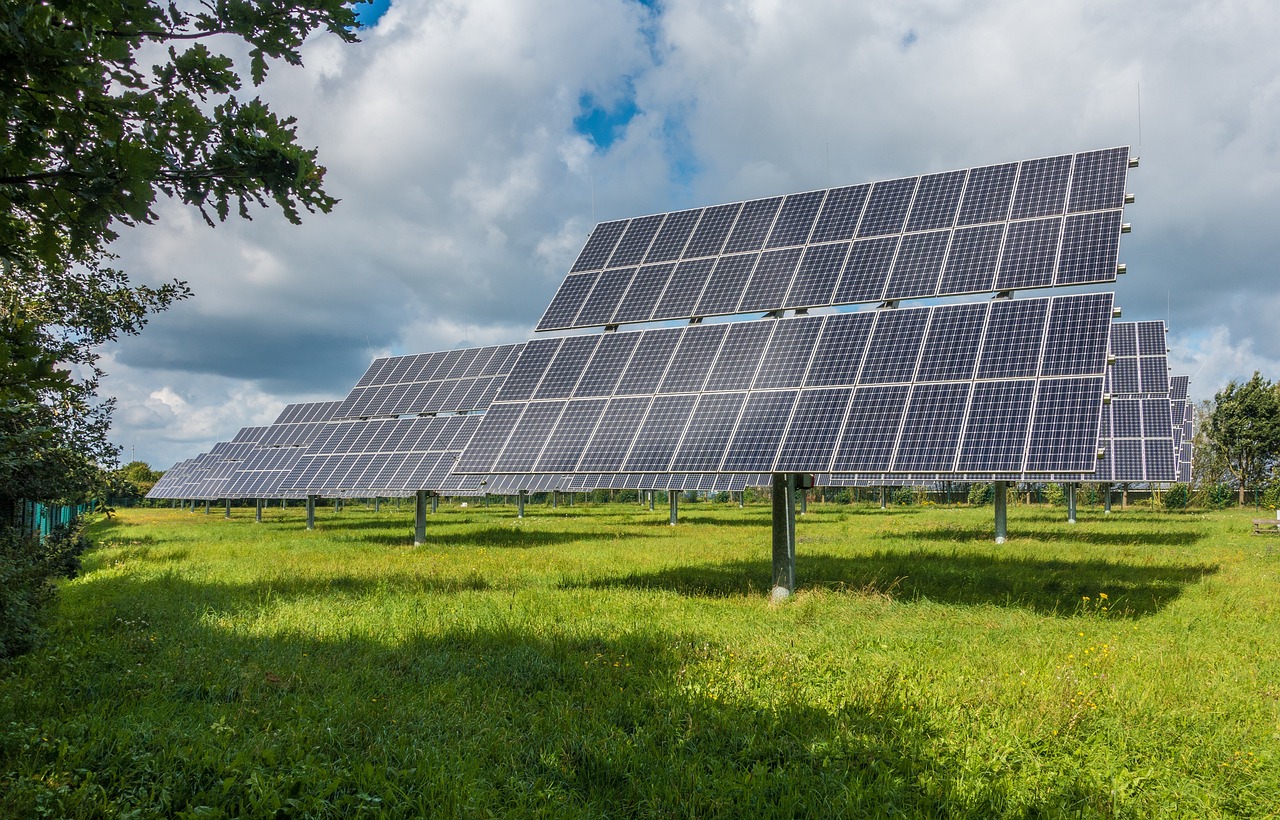
[Water in Energy Production]
Water is not just a vital resource for hydration and agriculture; it plays a critical role in energy production as well. One of the most significant ways water contributes to energy generation is through hydroelectric power. This method harnesses the kinetic energy of flowing water to generate electricity, making it one of the most efficient and sustainable forms of energy. In fact, hydroelectric power accounts for approximately 16% of the world's electricity, showcasing its importance in our energy landscape.
Hydroelectric power plants typically operate by using a dam to store water in a reservoir. When the water is released, it flows through turbines, spinning them to generate electricity. This process not only provides a renewable energy source but also helps in managing water resources effectively. However, it’s essential to consider the environmental implications of such projects, as they can disrupt local ecosystems and affect aquatic life.
In addition to hydroelectric power, water is also crucial in other energy production methods, such as thermoelectric power generation. In this process, water is used to cool and condense steam that drives turbines in fossil fuel and nuclear power plants. This cooling process is vital for maintaining the efficiency of energy production. However, it raises concerns about water consumption and thermal pollution, which can harm local water bodies.
To illustrate the relationship between water and energy production, consider the following table that highlights the different types of energy generation and their water usage:
| Energy Source | Water Usage (liters per MWh) | Environmental Impact |
|---|---|---|
| Hydroelectric | 0 | Minimal, but can affect aquatic ecosystems |
| Nuclear | 2,500 | Thermal pollution and potential contamination |
| Coal | 1,300 | High emissions and water pollution |
| Natural Gas | 1,000 | Lower than coal, but still significant |
| Solar Thermal | 800 | Can lead to local water scarcity |
As we move towards a more sustainable future, it is crucial to find a balance between energy production and water conservation. Innovations in technology, such as closed-loop cooling systems and water recycling initiatives, are being developed to minimize water usage in energy production. These advancements not only help in conserving water but also enhance the overall efficiency of energy systems.
In conclusion, while water is an indispensable resource for energy production, it is imperative to consider its environmental impacts and pursue sustainable practices. By doing so, we can ensure that both our energy needs and water resources are managed responsibly for future generations.
- What is hydroelectric power? - Hydroelectric power is generated by harnessing the energy of flowing water, typically through dams.
- How does water affect energy production? - Water is essential for cooling in thermal plants and for generating electricity in hydroelectric plants.
- What are the environmental impacts of using water for energy? - Water usage can disrupt local ecosystems and lead to thermal pollution, affecting aquatic life.
- Are there sustainable practices for water use in energy production? - Yes, techniques such as closed-loop cooling systems and water recycling help minimize consumption.

[Water Management in Industries]
Effective water management in industrial settings is not just a necessity; it's a responsibility. As industries grow and expand, their demand for water increases, leading to potential shortages and environmental concerns. Companies are now recognizing that managing water resources wisely can significantly enhance their sustainability efforts while also improving their bottom line. After all, water is a precious resource, and its conservation is crucial for both the environment and the economy.
One of the primary strategies for effective water management is the implementation of recycling and reuse systems. By treating and reusing water within their processes, industries can drastically reduce their freshwater intake. For instance, many manufacturing plants are adopting closed-loop systems where water is cycled through processes multiple times before being discharged. This not only conserves water but also minimizes wastewater treatment costs.
Moreover, industries are increasingly using advanced technologies to monitor and manage their water usage. Smart sensors and IoT devices can provide real-time data on water consumption, allowing companies to identify leaks, inefficiencies, and areas for improvement. This data-driven approach not only enhances operational efficiency but also promotes a culture of accountability and sustainability among employees.
Another critical aspect of water management in industries is employee training and awareness. Companies are investing in training programs to educate their workforce on the importance of water conservation and the methods available to achieve it. When employees understand the impact of their actions, they are more likely to engage in practices that reduce water waste. For example, simple actions like turning off taps when not in use or reporting leaks can lead to significant water savings over time.
To illustrate the importance of water management, consider the following table that highlights the potential savings from implementing various water conservation strategies:
| Water Conservation Strategy | Potential Savings (liters/year) | Environmental Impact |
|---|---|---|
| Closed-loop water systems | Up to 1,000,000 | Reduces freshwater withdrawal |
| Leak detection and repair | 500,000 | Minimizes water wastage |
| Employee training programs | 200,000 | Promotes sustainable practices |
Furthermore, industries must also consider the regulatory landscape surrounding water use. Many regions have implemented strict regulations to protect water resources, and non-compliance can lead to hefty fines and reputational damage. By proactively managing water resources, industries can not only comply with regulations but also position themselves as leaders in sustainability.
In conclusion, effective water management in industries is essential for ensuring sustainability, reducing costs, and complying with regulations. By adopting innovative technologies, implementing recycling systems, and fostering a culture of conservation among employees, industries can make a significant impact on their water usage. Ultimately, this commitment to responsible water management will not only benefit the environment but also enhance the industry's reputation and profitability.
- Why is water management important in industries?
Water management is crucial for conserving resources, reducing costs, and complying with environmental regulations. - What are some common water conservation strategies?
Common strategies include recycling water, implementing closed-loop systems, and conducting regular leak detection. - How can technology help in water management?
Technology, such as smart sensors and IoT devices, can provide real-time data to monitor and optimize water usage. - What role do employees play in water conservation?
Employee training and awareness are vital for promoting a culture of conservation and ensuring everyone contributes to water-saving efforts.
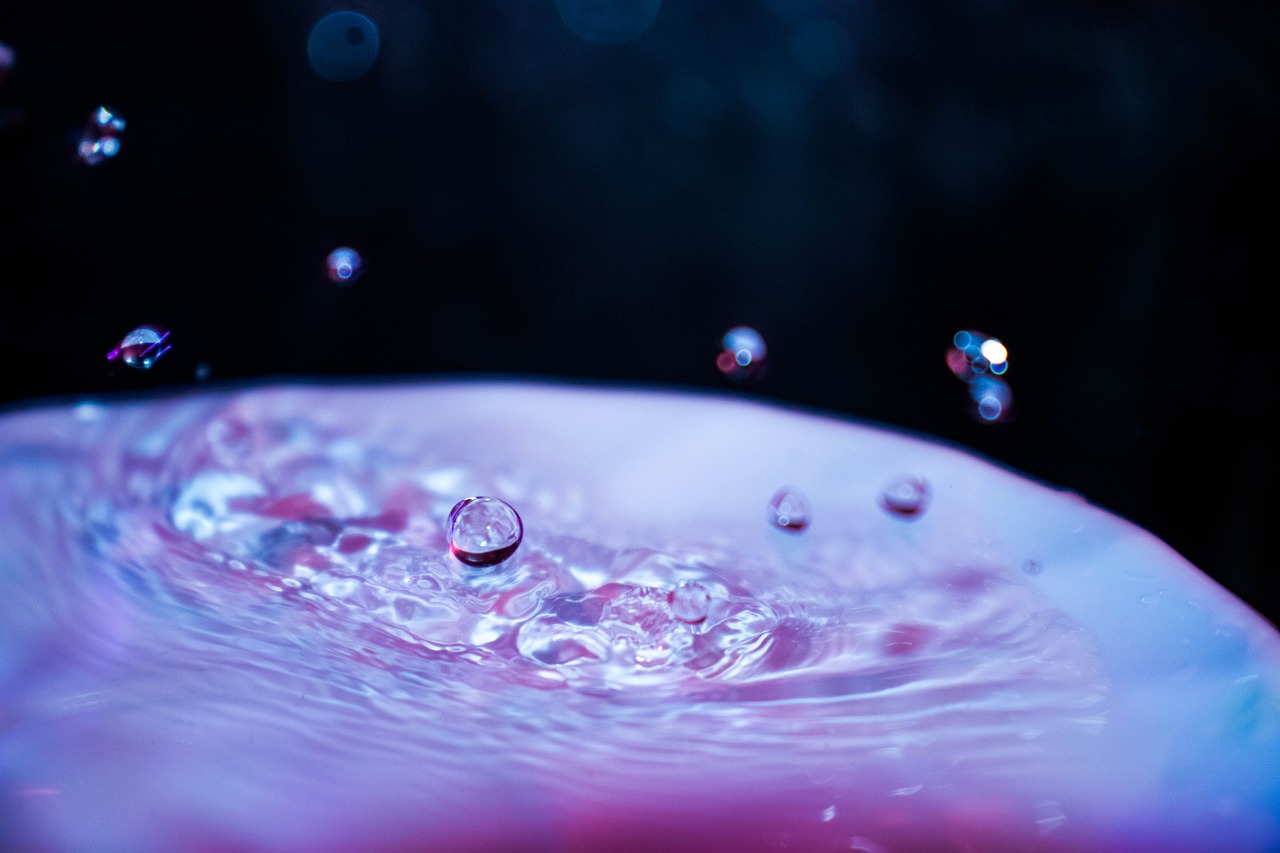
[Cultural and Recreational Aspects of Water]
Water is not just a simple necessity for survival; it is deeply interwoven into the fabric of our cultural identities and recreational activities. Across the globe, water is celebrated in various forms, from sacred rituals to leisurely pursuits, highlighting its multifaceted role in our lives. Have you ever thought about how many traditions revolve around water? From the cleansing rituals in religious ceremonies to the communal joy of a day at the beach, water is a central theme in many aspects of life.
In many cultures, water symbolizes purity, life, and renewal. For example, in Hinduism, the Ganges River is revered as a sacred entity, believed to wash away sins and bring spiritual enlightenment. Similarly, in various Indigenous cultures, water is seen as a living entity, deserving of respect and protection. These beliefs underscore the importance of water not just as a resource, but as a vital part of cultural heritage and identity.
On the recreational side, water offers a plethora of activities that cater to all ages and interests. Whether it's swimming in a pool, kayaking on a river, or fishing in a serene lake, these activities not only provide fun but also promote mental and physical well-being. Engaging with water can be a refreshing escape from the hustle and bustle of daily life, allowing individuals to connect with nature and unwind. Here are some popular water-based recreational activities:
- Swimming: A fantastic way to stay fit while enjoying the coolness of water.
- Fishing: A relaxing pastime that connects people with nature and can be enjoyed alone or with friends.
- Boating: Whether it’s sailing or paddle boarding, being on the water can be exhilarating.
- Water Sports: Activities like jet skiing, wakeboarding, and surfing offer thrilling experiences for adventure seekers.
Moreover, water bodies often serve as community gathering spots. Beaches, lakes, and rivers become the backdrop for family picnics, community festivals, and sporting events. These gatherings foster a sense of belonging and community spirit, reminding us of the importance of water not just as a physical entity, but as a social connector.
As we navigate through life, it’s essential to recognize the cultural significance of water and the enjoyment it brings. Whether through rituals that honor its sacredness or recreational activities that celebrate its beauty, water plays a crucial role in shaping our experiences and memories. So next time you dip your toes in the water or take part in a water-related tradition, think about the rich history and meaning behind it. Isn’t it fascinating how something so simple can hold such profound significance?
Q: Why is water considered sacred in many cultures?
A: Water is often seen as a source of life and purity. Many cultures believe it has cleansing properties, both physically and spiritually, leading to its reverence in rituals and traditions.
Q: What are some benefits of recreational activities involving water?
A: Engaging in water-based activities can improve physical fitness, reduce stress, and enhance mental well-being. Activities like swimming and fishing provide a connection to nature and promote relaxation.
Q: How can communities promote the cultural and recreational use of water?
A: Communities can organize events around water bodies, such as festivals, clean-up days, and educational programs about water conservation and its cultural significance.

[Water in Cultural Practices]
Water is more than just a basic necessity for survival; it holds a profound significance in various cultural practices around the globe. For many societies, water symbolizes life, purity, and renewal. It acts as a bridge connecting generations, traditions, and beliefs. Think about how often water appears in rituals and ceremonies—from baptism in Christianity to the Ganges River's sacredness in Hinduism. These practices highlight how water is interwoven into the fabric of cultural identity.
In numerous cultures, water is seen as a cleansing agent, both physically and spiritually. For instance, in many Indigenous cultures, water is revered as a sacred element that embodies the spirit of the land. Rituals often involve the use of water to bless individuals, places, or objects, signifying a fresh start or purification. This reverence for water can be observed in various ceremonies, such as:
- Weddings: Many cultures incorporate water into wedding ceremonies, symbolizing the couple's commitment to nurture their relationship, much like how water sustains life.
- Harvest Festivals: In agricultural societies, water plays a crucial role in celebrations that honor the earth's bounty, often involving rituals to ensure good rainfall and crop yields.
- Funerals: Water is frequently used in mourning rituals, symbolizing the passage of the soul and the cleansing of grief.
Moreover, the cultural significance of water extends to folklore and mythology. Many cultures have deities associated with water, such as Poseidon in Greek mythology or Yamuna in Hindu beliefs. These figures often represent the dual nature of water—its capacity to nourish and to destroy. Stories and legends surrounding these deities emphasize the respect and fear that water commands in various societies.
In addition to its spiritual connotations, water also serves as a focal point for community gatherings and recreational activities. Rivers, lakes, and oceans often become the heart of social life, where communities come together for festivals, fishing, and swimming. These activities not only strengthen social bonds but also promote mental and physical well-being, reminding us of water's integral role in our lives.
As we navigate through modernity, the cultural practices surrounding water continue to evolve. While some traditions may fade, new practices emerge, reflecting contemporary values and environmental awareness. Today, many communities are adopting sustainable practices that honor the cultural significance of water while addressing the urgent need for conservation. This shift emphasizes that water is not merely a resource but a vital part of our heritage and identity.
1. Why is water considered sacred in many cultures?
Water is often viewed as a source of life and purity. Its ability to cleanse and renew makes it a powerful symbol in various rituals and traditions.
2. How do cultural practices involving water vary around the world?
Cultural practices involving water can vary significantly, with some societies using it in religious ceremonies, while others celebrate it through festivals and communal activities.
3. What role does water play in community bonding?
Water serves as a gathering point for communities, facilitating social interactions through recreational activities and cultural celebrations that strengthen relationships.
4. How can modern practices preserve the cultural significance of water?
By adopting sustainable practices and integrating traditional knowledge, communities can honor the cultural significance of water while ensuring its preservation for future generations.

[Recreational Activities Involving Water]
Water is more than just a life-sustaining resource; it also serves as a playground for countless recreational activities that bring joy and relaxation to our lives. Whether it's the soothing sound of waves crashing on the shore or the thrill of a white-water rafting adventure, engaging with water can rejuvenate our spirits and promote overall well-being. Have you ever noticed how a day at the beach or a serene afternoon by a lake can wash away your stress? That's the magic of water!
One of the most popular water-based activities is swimming. Not only is it a fantastic way to cool off during hot summer days, but it's also an excellent full-body workout that enhances cardiovascular fitness, builds muscle strength, and improves flexibility. Swimming can be enjoyed in various settings, from backyard pools to natural lakes and oceans. Each environment offers a unique experience, whether you're practicing laps in a pool or floating leisurely on a calm lake.
Fishing is another cherished water activity that combines patience, skill, and a love for nature. It allows individuals to connect with the environment while enjoying quiet moments of reflection. Many people find peace in casting their lines into tranquil waters, hoping for a catch. Fishing can be a solitary pursuit or a social event, bringing friends and family together for a day of bonding and fun. Plus, there's nothing quite like the satisfaction of reeling in a big one!
For the more adventurous souls, water sports like kayaking, paddleboarding, and jet skiing offer adrenaline-pumping excitement. These activities not only provide a rush of adrenaline but also allow participants to explore beautiful waterways and appreciate the natural world from a unique perspective. Kayaking, for instance, can take you through serene rivers or challenging rapids, while paddleboarding offers a full-body workout and a chance to enjoy the scenery at a leisurely pace.
Moreover, water-based recreational activities can contribute significantly to mental health. Engaging with water has been shown to reduce stress, enhance mood, and even improve cognitive function. The calming effect of being near water can lead to increased mindfulness and a sense of tranquility. Have you ever felt more relaxed after spending time by a lake or ocean? It's not just your imagination; there's science behind it!
To further illustrate the variety of recreational activities that involve water, here’s a simple table that summarizes some popular options:
| Activity | Description | Benefits |
|---|---|---|
| Swimming | Full-body workout in pools, lakes, or oceans. | Improves fitness, reduces stress. |
| Fishing | Relaxing pursuit in rivers, lakes, or oceans. | Connects with nature, promotes patience. |
| Kayaking | Exploring waterways in a small boat. | Adventure, fitness, and nature appreciation. |
| Paddleboarding | Standing on a board while paddling. | Full-body workout, balance improvement. |
| Jet Skiing | Thrilling ride on watercraft. | Adrenaline rush, fun with friends. |
Ultimately, water activities not only provide entertainment but also foster connections with family and friends. They create lasting memories, whether you're splashing around in the pool, fishing at dawn, or kayaking through breathtaking landscapes. So, the next time you're looking for a way to unwind, consider diving into one of these water-based activities. You might just find that water is the perfect remedy for life's stresses!
- What are the health benefits of swimming? Swimming provides a comprehensive workout, helping improve cardiovascular health, muscle strength, and flexibility.
- Is fishing a good way to relax? Absolutely! Fishing allows you to connect with nature, enjoy peaceful surroundings, and can be a meditative experience.
- Can water sports help with stress relief? Yes! Engaging in water sports can release endorphins, boost your mood, and provide a refreshing escape from daily life.
- What safety precautions should I take when engaging in water activities? Always wear a life jacket when necessary, be aware of weather conditions, and never swim alone.
Frequently Asked Questions
- Why is water essential for human health?
Water is crucial for our bodies as it helps in digestion, circulation, and regulating body temperature. Staying hydrated ensures that our organs function properly, and dehydration can lead to serious health issues such as fatigue, headaches, and even kidney problems.
- How does water impact agriculture?
Agriculture relies heavily on water for crop production. Efficient irrigation methods, like drip and sprinkler systems, are vital for optimizing water usage. However, climate change poses significant challenges by altering weather patterns and affecting water availability for farming.
- What are some common irrigation techniques?
Some common irrigation techniques include surface irrigation, drip irrigation, and sprinkler systems. Each method has its own advantages and disadvantages. For instance, drip irrigation is highly efficient but can be more expensive to implement compared to traditional surface methods.
- How does climate change affect water availability?
Climate change impacts water availability by altering rainfall patterns, increasing evaporation rates, and causing extreme weather events. These changes can lead to droughts or floods, both of which can significantly affect agricultural productivity and water supply.
- What are the main contaminants in water?
Common contaminants in water include bacteria, heavy metals, pesticides, and chemicals. Testing water quality is essential to ensure it is safe for both human consumption and agricultural use, as contaminated water can lead to serious health risks and crop failures.
- How is water used in industrial applications?
Industries utilize water for various processes, including manufacturing, cooling, and energy production. It's essential to adopt sustainable practices in these industries to minimize water consumption and reduce waste, ensuring that water resources are preserved for future generations.
- What role does water play in energy production?
Water is a key component in energy production, particularly in hydroelectric power generation. It harnesses the energy of flowing water to produce electricity. However, this process can have environmental implications, such as habitat disruption for aquatic life.
- How can industries manage water more effectively?
Effective water management in industries involves strategies like recycling water, reducing consumption, and implementing water-efficient technologies. By adopting these practices, industries can significantly lower their environmental impact and contribute to sustainable water use.
- What cultural significance does water hold?
Water holds immense cultural significance in many societies, often symbolizing life, purity, and renewal. It is frequently incorporated into rituals and traditions, reflecting its importance in cultural identity and community practices.
- What are some recreational activities that involve water?
Recreational activities involving water include swimming, fishing, kayaking, and boating. Engaging in these activities not only provides relaxation and enjoyment but also promotes mental and physical health, making water a vital aspect of leisure and recreation.














